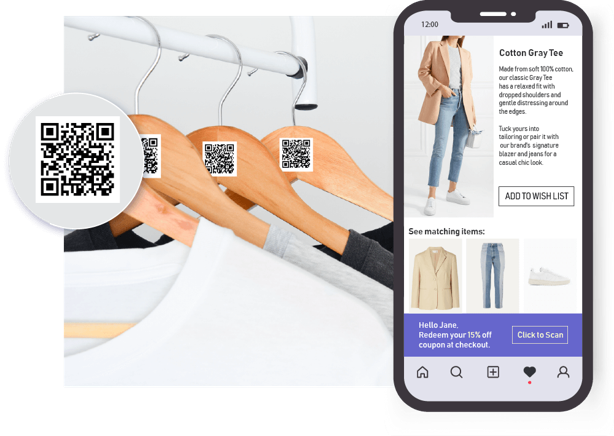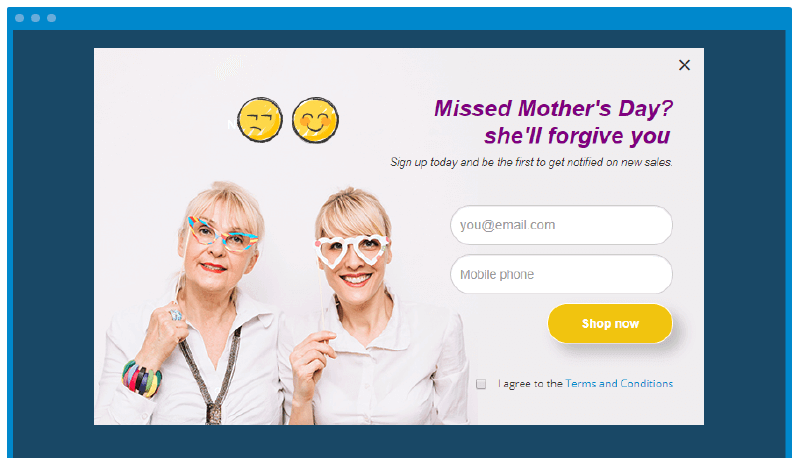Mother’s Day is a big day for mothers and the retail industry. Mother’s Day, which is celebrated on May 9th this year, is the third-largest retail holiday in the U.S. The nuance of Mother’s Day is that shoppers are buying primarily for their mothers and stepmothers. A part of that $20B Mother’s Day retail spends also includes purchases for wives, daughters, grandmothers, sisters, and even friends.
Consequently, any retailer should have a marketing campaign ready to roll out for the big holiday. Below you’ll find a combination of online and physical retail best practices for your Mother’s Day marketing strategy.
Impressive Mother’s Marketing Statistics
- Consumers spend $2.56 billion on flowers alone for their mothers. [MuchNeeded]
- Jewelry is one of the most gifted items to moms in the U.S. [MuchNeeded]
- Because of COVID-19, 79% of consumers said celebrating Mother’s Day is more important to them this year. [NRF]
- The top three gift categories that became more popular this year are housewares (25%), books or CDs (24%), and electronics (19%). [NRF]
- Consumers are willing to spend $8 more, for an average of $205 on Mother’s Day gifts and celebrations this year. [NRF]

Mother’s day Marketing and COVID-19: The latest trends
Higher spending by a younger demographic
Consumers under the age of 25 are planning on spending $39 more than they did last year. This demographic is more likely to purchase electronics as gifts, include things like Alexa, Google Home devices, or Facebook Portals, making it easier for them to connect with their mothers this year.
Spending will get less creative
77% of consumers will spend less on Mother’s Day because of the financial impact of COVID-19. Due to these constraints, consumers will be looking for ways to treat moms at home in an affordable way. This includes a spa day at home, spending time together, or planning a video call with family.
A desire to return to normal
Though fewer consumers plan to go on their traditional outings, 46% of people still want to celebrate their moms by going out. Some choose a special meal or another activity outside. More people are eager to get back to normal and want to do more than video chats and see their parents from a distance.
12 creative retail best practices for effective mother’s day marketing
Mother’s Day is a special day, made more important after the circumstances of the last year. Though there are new challenges consumers and retailers will face, you’ll find retail best practices to get the most out of this loving holiday below.
Retail Best Practice #1: Provide a special freebie to all moms (Online & In-store)

A great way to promote Mother’s Day is to give away free items to all moms. While giving away your products for free can seem counterintuitive, there’s a lot of benefit to this retail practice. These freebies will help you introduce your product to new audiences. At the same time, product offers will also help you build a relationship with your customers. A free item for all types of moms will help you build a relationship with your consumers.
You can send out these special offers using ContactPigeon. We can help bring your Mother’s Day marketing ideas to life.
Retail Best Practice #2: Launch a fine-tuned 360 omnichannel campaign via email, SMS, Whatsapp, and push notifications
Creating an omnichannel campaign for Mother’s Day will allow you to connect with potential consumers where they spend most of their time; online. To do this, you’ll need to create a unified message sent out to consumers. The message should be personalized to your loyal shoppers. When creating engagement campaigns, writing a catchy marketing subject line will help catch their attention.
You can use ContactPigeon, or any omnichannel customer engagement platform for retailers to engage your customers across the channels.

Retail Best Practice #3: Create a dedicated Mother’s Day category section on your e-shop
To bring more awareness to your store on Mother’s Day, add a specific Mother’s Day section. You can use this section to highlight products that will make great gifts for all moms. Once the holiday passes, you can remove it or re-purpose the section for an upcoming holiday.
Interested in other holiday marketing retail best practices? Find retail best practices for the holiday season here.
Retail Best Practice #4: Convert your store’s windows to interactive experiences with next-gen QR Codes
The 2-way QR code is an artful and functional way to get information about your store into mobile users’ hands. These QR codes are designed to be colorful pieces of art. No more are boring, plain QR codes. What’s more, these QR codes can be dynamic and interactive as they can retrieve information relevant to the scanner’s profile.

Putting these QR codes on your storefront lets consumers know as much as they want to about you and helps you begin a relationship with them.
Retail Best Practice #5: Create Mother’s Day product bundles from existing SKUs
A Mother’s Day retail best practice is to create bundles of your products that fit together for the holiday. This is an excellent cross-selling tactic that will boost your revenue on Mother’s Day and increase your average order value (AOV).
This strategy is a great way to host one-off promotions on your website.
Retail Best Practice #6: Run giveaways with popular mom influencers
Another retail best practice is to leverage your connection to mom influencers that can help increase awareness of your brand. Mom influencers should be a part of your Mother’s Day marketing strategy.
They already have an established audience that trusts them and the products they recommend. Utilizing them will help the average consumer connect with your brand, potentially for the first time.
Retail Best Practice #7: Run Ads targeting male partners who are seeking gifts
When it comes to targeted Ads, consider running targeted ads on Facebook or Instagram for men looking to buy gifts. You can make creative Mother’s Day ads that give these men ideas on what to buy from your store for the moms (including wife, grandmother, etc.) in their life.
Retail Best Practice #8: Unveil secret Mother’s Day deals only to your VIP customers
By gathering loyal customers, you have creative consumers that are 52% more likely to buy from you than your competitors. By sending out a strategic Mother’s Day marketing campaign to VIP customers only, you’re building a long-term relationship.
Retail Best Practice #9: Offer different time-sensitive Discounts per channel to encourage opt-ins

By offering your customers a time-sensitive discount, they pushed them to make a decision faster. Discounts, in general, are great ways to attract new customers and boost sales. A retail best practice is to create a Mother’s Day exclusive discount that encourages consumers to check out your site immediately.
According to a study by Software Advice, 97% of survey respondents used discounting as a top pricing strategy.
Retail Best Practice #10: Create and distribute LOTS of branded Mother’s Day DIY content
A retail best practice during COVID-19 is to create DIY Mother’s Day gifts content. You can post this organically on Pinterest. Due to certain restrictions and the financial toll of COVID-19, your consumers might turn to cheaper, creative ways to celebrate mom.
Having creative Mother’s Day marketing ideas for 2022 will help retain customer loyalty after the pandemic. You can create and distribute different, affordable ways to give mom a great day. Some ideas include breakfast in bed, homemade photo frames, or a home spa relaxation session. Of course, suggest relevant products from your store that may help with the DIY process.
Retail Best Practice #11: Optimize your upselling and cross-Selling Strategies
For Mother’s Day, you can focus on upselling products people buy for their mom by recommending a better version. When someone comes to your site and chooses a product, you can also recommend something that pairs well with that item. Product recommendations are responsible for about 10% to 30% of store revenues.
Based on popular Mother’s Day gift items, you can pair categories together to make shopping for moms easier for your consumers. Alternatively, consider a product recommendation pop-up based on the items in the current cart.
Retail Best Practice #12: Keep Your Operational Costs Low
Since the pandemic has lasted for so long, the U.S. will not bounce back by Mother’s Day. In-store sales may still be depressed. That’s why a retail best practice is to optimize your storefront hours and focus on turning sales online.
As consumers are spending more time online shopping and browsing, you can target them where they’re at to boost revenue.
Discover more Retail Best Practices resources
- Retail Best Practices: Nailing your Holiday Marketing
- Retail Best Practices for Valentine’s Day Marketing
Useful Mother’s Day marketing resources for eCommerce retailers
- The 50 most important Mother’s Day statistics for retailers
- 12 Mother’s Day Marketing Campaigns We Loved
- 100+ Catchy Mother’s Day Subject Lines for eCommerce
- 5 Advanced Mother’s Day Marketing Ideas for eCommerce
- Email Marketing Ideas for Mother’s Day [Free Templates]
Omnichannel is the mother of all strategies
Your customers are no longer choosing to buy your products by walking into your store and purchasing something they like. Instead, they are engaging with your brand on multiple platforms. They’re looking to build a relationship online before they buy. That’s why taking an omnichannel customer engagement approach to your retail strategy will help you long-term.
Taking this strategic approach will boost customer satisfaction, increase revenue, and in turn, raise your conversion rate for this Mother’s Day.




